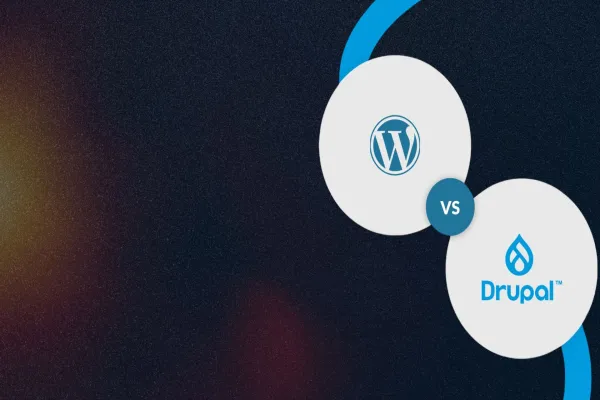The CMS wars are older than most developers care to admit, but the battle lines are shifting. For years, WordPress held its ground as the default CMS for small businesses, bloggers, and even some larger enterprises thanks to its user-friendly interface and plugin ecosystem. But the world has changed—and so have the needs of digital-first organizations.
Enter Drupal CMS—not the Drupal of a decade ago, but the modern, enterprise-grade, innovation-fueled version we saw unveiled at DrupalCon Atlanta in 2025. If you're considering whether your team should make the jump from WordPress to Drupal, there's never been a more compelling moment.
This isn’t about just switching content management systems. It’s about future-proofing your platform, reducing risk, enabling scale, and preparing for an architecture where agility, extensibility, and security are non-negotiable. Let’s break down why Drupal migration is now less of a “maybe” and more of a strategic imperative.
The Innovation Gap Is Real—and Drupal Is Winning
WordPress is built for speed and simplicity, and in many ways, that's its strength. But simplicity has its limits.
In contrast, Drupal CMS—as presented at DrupalCon Atlanta 2025—has taken bold strides with initiatives like Starshot, the new Experience Builder, built-in AI support, and a deeper commitment to accessibility and structured content.
These aren’t fluffy updates. They’re direct responses to the pain points CTOs and architects face in today’s composable, API-first digital world.
Experience Builder offers native visual page editing capabilities akin to what WordPress plugins like Elementor provide—but without performance trade-offs or plugin dependency sprawl.
AI integration lets you automate content scaffolding, SEO structuring, and editorial workflows at a level WordPress still handles via third-party tools.
Recipes allow teams to spin up vertical-specific site builds pre-configured for different industries—think of it as low-code for deployment.
This is not a game of catch-up. It’s Drupal leaping ahead.
Security: Drupal Is Enterprise-Grade by Default
Let’s be real. WordPress’s reputation for being insecure isn’t just anecdotal—it’s backed by data. According to Sucuri’s website threat research, WordPress continues to account for the majority of hacked websites, largely due to vulnerable plugins and outdated installations.
Drupal CMS, on the other hand, is architected with security in mind. It features:
A dedicated Security Team working closely with contributors to identify and patch vulnerabilities before they hit production.
Core security standards that support granular user permissions, input sanitization, and field-level access control.
A structured, auditable update process with enterprise-level patching cadence.
For organizations in healthcare, government, finance, or any regulated space, this is the difference between compliant and compromised.
Performance and Scalability: Drupal Is Built for Growth
One of the most tangible benefits of migrating from WordPress to Drupal lies in how well it performs under load. While WordPress can be scaled, doing so usually involves a labyrinth of caching plugins, server tuning, and constant babysitting.
Drupal takes a different approach.
It’s decoupled-ready, allowing you to pair it with modern JS frameworks like React, Vue, or Next.js out of the box.
It leverages built-in caching layers like BigPipe and Dynamic Page Cache, reducing the need for third-party add-ons.
And most importantly, it has first-class support for structured content—something WordPress fakes through custom post types and ACF, often leading to spaghetti code in large implementations.
This makes Drupal ideal for enterprises with high-traffic portals, multisite ecosystems, and dynamic content demands.
Structured Content and Multilingual Capabilities: Drupal Is Simply More Flexible
Modern CMS architecture demands more than posts and pages. You need to create, relate, and reuse content across channels—from websites to apps, from print to digital signage. WordPress, even with custom fields and plugins, wasn’t built for this.
Drupal CMS gives you that flexibility natively.
Its entity-based architecture lets you model your data exactly how your business operates.
Multilingual support is core, not an add-on. Translation workflows are baked into every entity and field, and locale switching is seamless.
Views, content types, and taxonomy systems let developers and content architects build content models as rich and complex as the needs they’re serving.
For enterprises with global footprints or composable architecture needs, this is a game changer.
Page Builders: Experience Builder Outclasses WordPress Plugins
For years, WordPress page builders like Elementor, WPBakery, and Divi have been a lifeline for marketers—but also a nightmare for developers. They generate bloated code, limit customization, and often break on updates.
Drupal CMS’s Experience Builder, unveiled at DrupalCon Atlanta, rewrites this story.
It enables real-time editing, drag-and-drop layout design, and section-based reuse—without performance bottlenecks or dependency bloat.
All changes are saved as drafts, can span multiple pages, and leverage structured content entities under the hood.
Global regions like headers, footers, and menus are editable within the visual interface, without touching templates or themes.
This isn’t a bolt-on feature. It’s an integrated evolution of what a CMS should offer to both marketers and developers.
Migration Is Now Easier Than Ever
Let’s address the elephant in the room: Drupal migration sounds hard.
Historically, yes—WordPress to Drupal wasn’t trivial. But thanks to community-driven tooling, robust documentation, and advancements like the Migrate API, the process is now more predictable and automatable.
The WordPress Migrate module helps bring over users, posts, media, taxonomies, and custom fields with mapping.
Tools like Drush, Acquia’s BLT, and custom migration recipes allow dev teams to write migration scripts that are reusable, testable, and CI/CD friendly.
Valuebound, for example, has migrated major enterprise portals from WordPress to Drupal CMS with zero downtime, audit compliance, and full URL parity.
In other words, migration is no longer a roadblock—it’s a roadmap.
Why Now?
So why now? Why make the jump from WordPress to Drupal in 2025?
Because the CMS space is evolving, and Drupal CMS is not just catching up—it’s leading. With Experience Builder, Starshot, and the newly unified Drupal Association strategy, Drupal is not just the better product—it’s the better ecosystem.
And let’s not forget: Drupal remains open source, community-led, and free of vendor lock-in. In a world leaning into closed platforms and SaaS bloat, that’s a massive strategic advantage.
Final Word: Drupal Isn’t Just the Better CMS. It’s the Better Bet.
This isn’t about which platform wins the popularity contest. This is about who’s better positioned to serve the complex, evolving needs of enterprise digital platforms in a composable, API-driven future.
WordPress might be good enough today. But Drupal CMS is built for tomorrow.
So if your organization is ready to think bigger, build smarter, and scale faster—Valuebound is ready to take you there.





